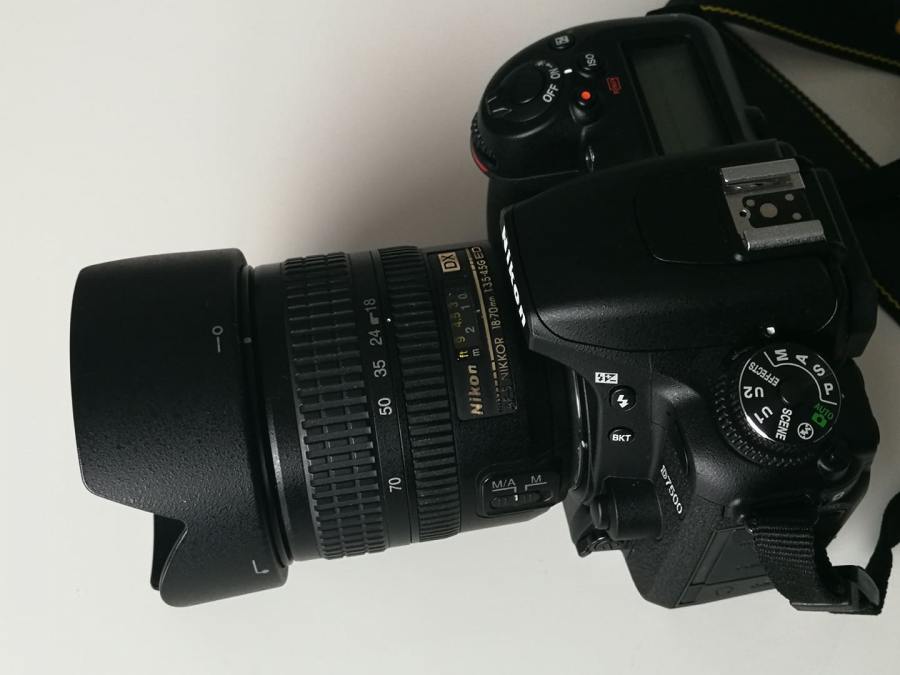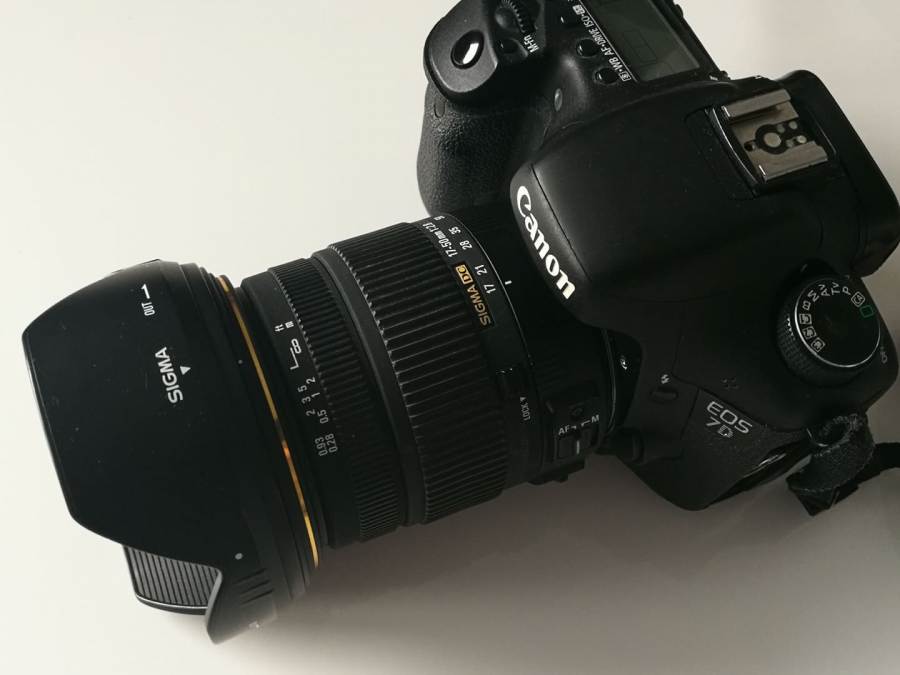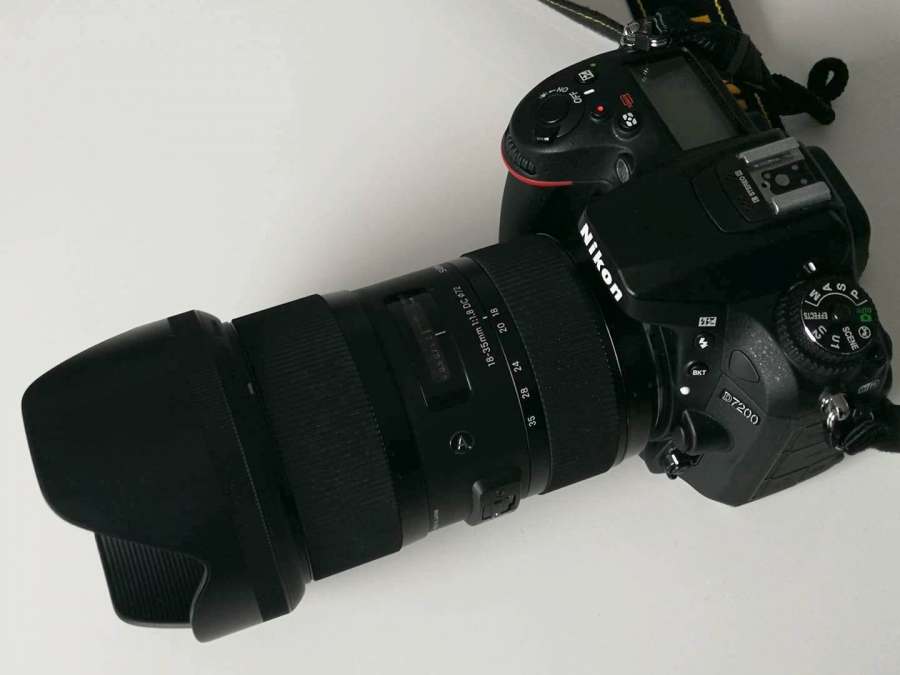A standard zoom lens is the first lens every photographer buys and the main lens for general use – including weather photography. As the new storm season approaches some of you will be looking to upgrade your lens lineup. Many may also be looking at spring camera sales, to get a new one and shoot some storms. We go through the requirements storm photography puts on cameras and standard zoom lenses, and our experience with fast standard zoom lenses for crop sensor DSLRs with some lens recommendations.
Photographing storms puts a wide range of requirements on lenses. Photographing in broad daylight and photographing lightning at night, the lens must be sharp. But photographing in low-light conditions, either at dusk and at night or in darkness due to thunderstorms, the lens must be able to gather as much light as possible.
As if that was not enough, cameras themselves put additional requirements on lenses. Today even entry level cameras have high megapixel count sensors – the Nikon D3500 packs a 24 MP sensor, Canon EOS 2000D also 24 MP and even the most inexpensive entry level DSLR, the Canon 4000D has an 18 MP sensor. Virtually all current crop sensor cameras, from entry level to professional level have very high megapixel count and pixel density sensors. In other words, they have extremely high resolution. To produce sharp photos at such high resolution both the photographing technique and the optics need to be very good. If you do not take care of both, you will not really be using the sensor’s resolution potential, rather you will be resolving poor technique and optical quality and producing unsatisfactory blurry photos.
Additionally, to put even more strain on the sensor, under low-light conditions the photographer must either increase the exposure time or increase the ISO setting (sensitivity) on the camera. Often longer exposure time will result in blurred detail and in order to keep the photo sharp the only option is to increase the ISO setting. However, higher ISO settings produce noisier photos with increasingly poor colors.
The standard kit zoom lens
Most interchangeable lens cameras come in ‘kits’ with a standard zoom lens paired to a camera body (except for higher end cameras, where users often buy lenses separately to fit their exact requirements). A standard kit zoom lens is typically 18 mm at the wide end and somewhere between 50 and about 130 mm at the long end, f/3.5 to f/5.6. Most are optically good, producing sharp image in the center of the field and variably sharp at the edges and corners of the field. Their weakness is their light gathering power – f/3.5 to f/5.6 lenses do not gather a lot of light. Additionally, to keep the cost down, most have plastic construction, which makes them less resistant to bumps and extensive use.
A typical standard kit zoom lens: the Nikkor 18-70 mm f/3.5-4.5G IF-ED. It is a good, versatile lens (actually, this one deserves an honorable mention – this particular lens is 15 years old and still works very well after very extensive use in adverse conditions). But the drawback with this lens is the f/3.5-4.5 aperture range, compared to f/2.8 with fast zoom lenses, necessitating the use of noisier higher ISO settings in low light conditions.
The advantages of fast zoom lenses
A fast zoom lens with a constant f/2.8 aperture will give you twice as much light at the widest angle and four times as much light at around 50 mm as the standard kit lens that you get with your camera. This translates to one to two stops of ISO sensitivity: e.g. use ISO 400 instead of 800 or 1600, respectively. One or two stops are a lot: it helps retain details, keeps noise lower and produces better color. Almost a full stop (f/3.5->f/2.8) also makes a big difference when photographing night skies. It cuts exposure in half, or reduces the ISO by a nearly full stop, again reducing noise.
We are looking at lenses in the price range up to about 700 €. The most important criteria in storm and general weather photography are:
- Sharpness. Not only in the center, but also along the edges of the field. Sharpness outside of the edge of the field is very important when photographing for example lightning, where it is more likely you will catch a bolt outside the center of the field.
- Wide aperture / fast lens. f/2.8 or faster. A fast lens becomes very useful when trying to catch storm structure in low light conditions or at night. Also useful for photographing meteors or aurora, or night sky in general.
- Low distortion. Pincushion and barrel distortion, basically how the lens bends straight lines, convex or concave towards the center of the field of view. All things being equal, the amount of distortion increases with increasing zoom range. Distortion can be very distracting, particularly the barrel distortion at the wide end. It can be difficult or next to impossible to correct in some cases.
We take a look at the most popular fast standard zoom lenses for crop sensor DSLRs:
Tamron 17-50 mm f/2.8 SP XR Di II LD VC: the Tamron is the least expensive of these four lenses. The build quality is OK. Autofocus is not as fast as USM or HSM in Canon and Sigma, and noisy, but works well. Optically it is mediocre to good, mostly sharp in the center with some falloff in sharpness in corners. Center sharpness is problematic at 50 mm f/2.8, but improves when closed down. It also has the most barrel distortion at the wide field end of all four lenses. It may be apparent with long straight lines in the field of view, like a sea horizon. It is available with built-in vibration control (VC), which can be useful when shooting handheld in low-light conditions, and without VC. The Tamron 17-50 mm f/2.8 SP XR Di II LD VC costs about 370 € (280 € for the non-VC version). Both go between 120-200 € used. Recommended with reservations*.
Sigma 17-50 mm f/2.8 EX DC HSM OS: we love this lens. Good zoom range, very good optical quality and good build quality. The lens body is plastic, but well-built, compact and tight. It is sharp in the center wide open at f/2.8 across the zoom range. Some falloff in corner sharpness, but not as much as the Tamron. Also slightly less barrel distortion at 17 mm, which is welcome too. It focuses fast and reliably. Very good also for astrophotography. Like the Tamron, it also has built-in image stabilization. Highly recommended. By far the best value for the price. A new lens will cost 290-320 €, used ones in good condition go for 200-250 €.
The Sigma 17-50 mm f/2.8 EX DC HSM OS is a fine, rather compact and well-built lens. Great value and very good image quality. Highly recommended!
Canon 17-55 mm f/2.8 IS USM: we have not used this lens, however, reviews are mostly highly favourable. Based on measurements, this lens is comparable to the Sigma 17-50 mm f/2.8, but significantly sharper at the edges of the field of view. Like both preceding lenses, this one too has built-in image stabilization. This lens is the most expensive among the selected fast zooms, it will set you back about 750 € new and about 450 € used in good condition. This is an expensive lens, considering the competition, pushing into the price range of full frame camera standard zoom lenses. Take a good look at the Sigma 17-50 mm f/2.8 before deciding.
Sigma 18-35 mm f/1.8 DC HSM Art: this is an optically superb, no-compromise lens. It is a very fast zoom lens, one of a kind, as no other manufacturer offers anything similar. Wide open it gathers over twice as much light as f/2.8 lenses. It is sharp wide open at f/1.8 throughout the zoom range and extremely sharp when stopped down to f/2.8 and onward. The relatively short zoom range translates into very little distortion, by far the least of the four lenses. The build quality is on a much higher level than any of the preceding lenses, the lens has a metal construction. Focusing is fast. On the down side, the zoom range is limited compared to other lenses. Also, the 18 mm wide field is slightly smaller than the 17 mm from the other three lenses. It is a superb lens, optically excellent and very fast (f/1.8), but with a limited zoom range and a slightly narrower field at the widest setting. A new one will set you back about 700 €, used ones in mint condition go for 450-550 €. Highly recommended, but consider the downsides of the lens and how it fits into your current or future/planned lens selection.
The Sigma 18-35 mm f/1.8 DC HSM Art lens stands apart. It is a rather big lens for its range and sensor size. It is built like a tank and packs super optics. It is also a much faster lens the other three fast zooms. Do take the limited zoom range into account when deciding on your lens.
Also consider
Sigma 17-70 mm f/2.8-4 DC Macro OS C: is also an alternative. It offers a bit more reach with 70 mm, at the cost of aperture. It already stops down to f/3.5 at 35 mm and is f/4 at 70 mm, so it is a full stop slower than the lenses discussed above for more than half its zoom range. More distortion, more pronounced barrel distortion at 17 mm. The preceding non-C model has been discontinued. We like this lens, however, it is slower at the long end and does have more distortion. Between this lens and the 17-50 mm Sigma, we would pick the latter.
Tokina 16-50 mm f/2.8 AF PRO DX SD: we have not used this lens, however, its reputation is quite poor – from mediocre sharpness to strong purple fringing (chromatic aberration). It does have two strong points: the widest at the wide end (16 mm) and excellent build quality. Test it and see reviews before buying.
* – get this lens if you want f/2.8 at a low price point. If the slightly higher price of the Sigma 17-50 mm f/2.8 EX DC HSM OS is not the deciding factor, get the Sigma.
NOTE: if you already have a camera and some lenses that are maybe not the top lenses – do not worry. Most lenses are good. Take these considerations into account when deciding to buy new lenses.
Some “What abouts”
Nikkor standard zoom lenses: Nikon crop format sensor (DX) cameras typically come in a kit with one of a range of Nikon’s standard zoom lenses, which start at 16 to 18 mm at the wide end and go to 55 to 140 mm (or even 200 or 300 mm) at the long end. These are mostly good lenses. They are mostly sharp and focus well. Their build quality is OK and will last for years, despite their plastic construction. If you want to make an occasional photo of lightning or storm structure during daytime, you will be well served by these lenses.
They do have some drawbacks. They are typically f/3.5 at the wide end and go down to f/5.6 at the long end – they are slower lenses, very much so at the long end (by two full stops). Longer zoom range lenses, particularly those above 100 mm at the long end also introduce very significant distortion.
The Canon standard kit lens, the Canon 18-55 mm f/3.5-5.6 EF-S IS STM is a good lens, with mostly the same drawbacks as all standard kit zoom lenses.
What about fast prime lenses? These offer some significant advantages over zoom lenses: at the same aperture / f-stop they are generally sharper than zoom lenses and have significantly less distortion. Prime lenses are generally also faster wide open – while fast zoom lenses are typically f/2.8, fast prime lenses are typically f/1.4 to f/1.8, and even f/1.2. Prime lenses are great for astrophotography. The downside of primes with respect to zooms is that you will need several lenses to cover different fields of view (e.g. expensive) and you will need to frequently change them, which may lead to missed photos (and more dust on the sensor). Plan purchase according to use.


